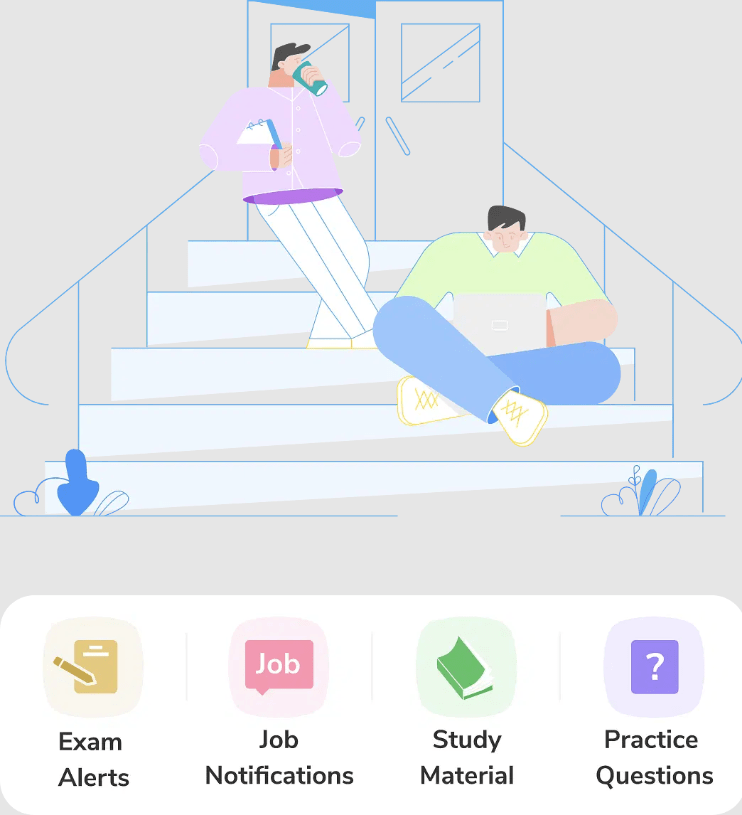Post Name : UGC NET Linguistics Syllabus 2024
Post Date : 03 June , 2024
Post Description : The UGC NET Linguistics Syllabus 2024 is available on the organization’s official website. Reviewing the new curriculum and test format is crucial if you wish to work in linguistics as an assistant professor or junior research fellow (JRF). It will help you do better on the UGC NET Linguistics Exam 2024 if you comprehend these details. You may get the UGC NET Linguistics Syllabus PDF with ease from this page.
UGC NET Linguistics Syllabus 2024 Overview
The UGC NET 2024 exam, organized by the National Testing Agency (NTA), will be held on June 18, 2024. This national exam is conducted twice a year to recruit candidates for Assistant Professor and Junior Research Fellowship (JRF) positions. Here’s a quick overview of the UGC NET exam.
| UGC NET Linguistics Syllabus 2024 Overview | |
|---|---|
| Exam Name | UGC NET 2024 |
| Conducting Body | National Testing Agency (NTA) |
| Post Category | UGC NET Linguistics Syllabus 2024 |
| UGC NET Exam Date 2024 | 18th June 2024 |
| Exam Level | National |
| Mode of Exam | OMR Based Mode |
| Medium of Exam | English and Hindi |
| Time Duration | 3 Hours |
| Number of Papers and Total Marks |
|
| Negative Marking | No Negative Marking |
| Official Website | https://ugcnet.nta.nic.in/ |
UGC NET Linguistics Syllabus 2024 PDF
The UGC NET Linguistics Syllabus 2024 PDF is essential for anyone preparing for the UGC NET 2024 exam. You can download the syllabus PDF in both English and Hindi using the link provided in this article.
It’s important to understand the syllabus, it will help you prepare effectively for the exam. The syllabus covers all the important topics you need to study. By following it, you can focus your preparation on what matters most, improving your chances of success. Make sure to download the UGC NET Linguistics Syllabus 2024 PDF and start your exam preparation
UGC NET Linguistics Syllabus 2024 Paper 1
The UGC NET Syllabus 2024 for Paper 1 evaluates your teaching and research skills. It focuses on your abilities in these areas. Here’s a simple overview of the UGC NET Paper 1 syllabus:
| UGC NET Linguistics Syllabus 2024 Paper 1 | |
|---|---|
| Unit Name | Syllabus |
| Unit-I (Teaching Aptitude) | Teaching concepts, objectives, levels; Learner characteristics; Factors affecting teaching; Teaching methods; Teaching support systems; Evaluation systems |
| Unit-II (Research Aptitude) | Research meaning, types, characteristics; Research methods; Steps of research; Thesis and article writing; ICT in research; Research ethics |
| Unit-III (Comprehension) | Reading comprehension with questions |
| Unit-IV (Communication) | Communication meaning, types, characteristics; Effective communication; Communication barriers; Mass-media and society |
| Unit-V (Mathematical Reasoning and Aptitude) | Types of reasoning; Mathematical aptitude; Number and letter series |
| Unit-VI (Logical Reasoning) | Argument structure; Deductive and inductive reasoning; Analogies; Venn diagrams; Indian logic |
| Unit-VII (Data Interpretation) | Data sources; Acquisition; Classification; Interpretation; Governance |
| Unit-VIII (Information and Communication Technology (ICT)) | Basics of ICT; Internet; Email; Digital initiatives; Governance |
| Unit-IX (People, Development and Environment) | Development and environment interaction; Environmental issues; Resources; Environmental protection acts; International agreements |
| Unit-X (Higher Education System) | History of higher education in India; Learning programs; Policies; Governance |
Also check : UGC NET Archaeology Syllabus 2024
UGC NET Linguistics Syllabus 2024 Unit Wise
The UGC NET Linguistics Syllabus 2024 is divided into ten sections, each focusing on different aspects of Linguistics. Here’s a simple summary of the main topics and subtopics for each unit in the syllabus. This detailed breakdown will help you understand what to study for the exam and organize your preparation effectively.
| UGC NET Linguistics Syllabus 2024 Unit Wise | |
|---|---|
| Unit | Topics Covered |
| Unit 1: Language and Linguistics | Nature of language, approaches to the study of language, language analysis, relevance to other fields. |
| Unit 2: Phonetics and Phonology | Phonetics (articulatory, auditory, acoustic), phonology (descriptive, generative). |
| Unit 3: Morphology | Basic concepts, morphological analysis, word-formation processes, morpho-syntax. |
| Unit 4: Syntax | Traditional and structural syntax, generative syntax, key concepts in the minimalist program, transformational components. |
| Unit 5: Semantics and Pragmatics | Types of meaning, sense relations, language use in context, communication models, speech acts, deixis, discourse analysis. |
| Unit 6: Historical Linguistics | Sound change, morphosyntactic and semantic change, linguistic reconstruction, language contact, dialect geography. |
| Unit 7: Sociolinguistics | Basic concepts, linguistic variability, language contact, language development, language ecology and endangerment, sociolinguistic methodology. |
| Unit 8: Areal Typology and South Asian Language Families | Language typology, universals, linguistic relatedness, approaches for study, salient features of South Asian languages, India as a linguistic area. |
| Unit 9: Interdisciplinary and Applied Linguistics—I | Psycholinguistics, language learning and teaching, clinical psycholinguistics. |
| Unit 10: Interdisciplinary and Applied Linguistics—II | Translation, lexicography, computational linguistics, stylistics, language and media. |
UGC NET Linguistics Exam Pattern 2024
The UGC NET Exam Pattern 2024 clearly explains the exam structure. Paper 1 has 50 questions, each worth 2 marks, for a total of 100 marks. Paper 2 has 100 questions, also worth 2 marks each, totaling 200 marks. Both papers award 2 marks for each correct answer, with no penalty for incorrect answers.
| UGC NET Linguistics Exam Pattern | ||
|---|---|---|
| Aspects | UGC NET Paper 1 | UGC NET Paper 2 |
| Number of Questions | 50 | 100 |
| Maximum Marks | 100 | 200 |
| Marking Scheme | Two marks for each correct answer | Two marks for each correct answer |
| Negative Marking | No negative marking | No negative marking |


